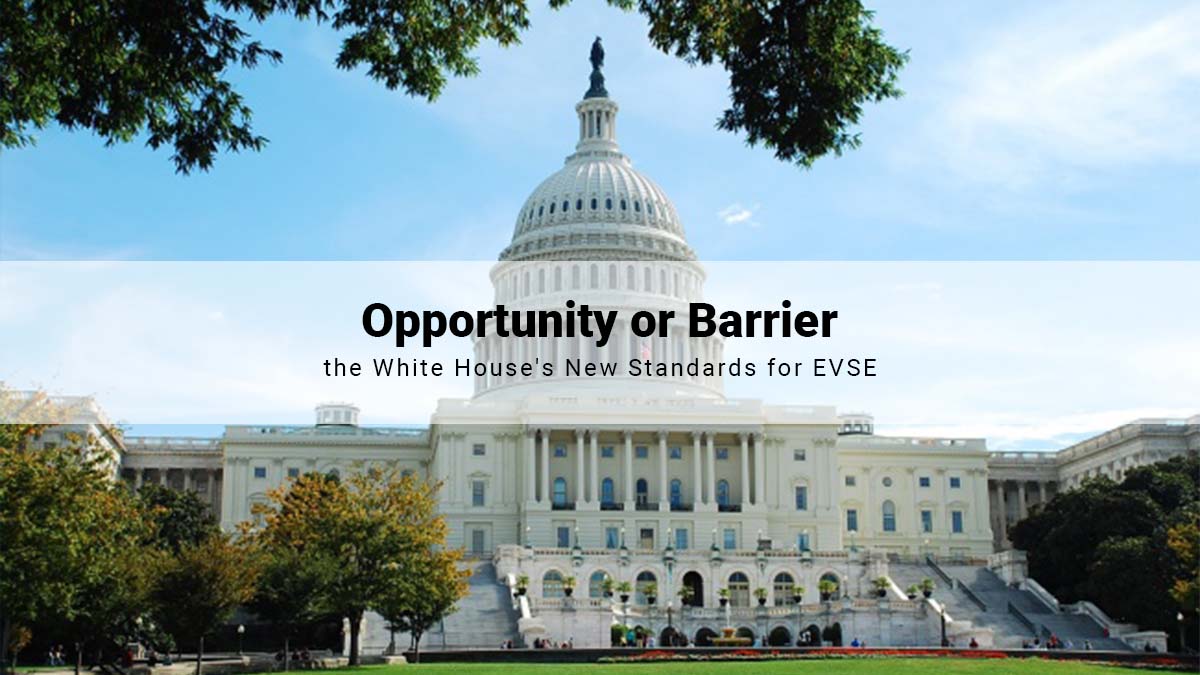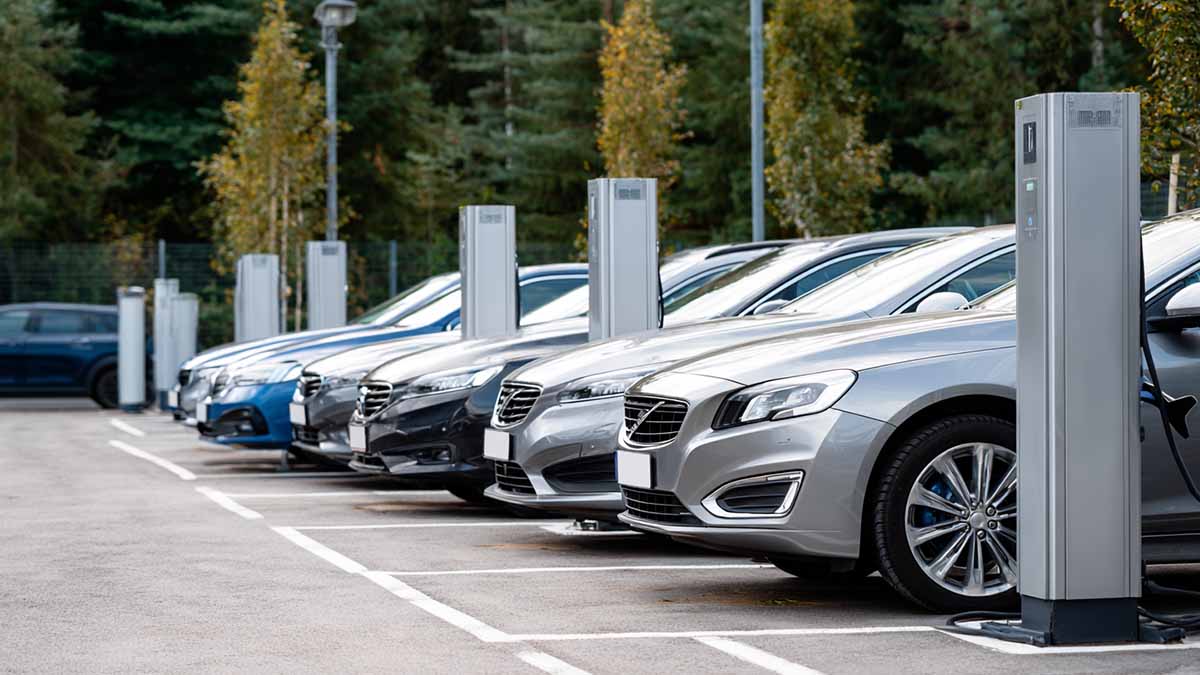 Is the White House's New Standards for Electric Vehicle Chargers Network a golden opportunity or a super barrier for EVSE exporters?
Is the White House's New Standards for Electric Vehicle Chargers Network a golden opportunity or a super barrier for EVSE exporters?
May 24, 2023
In early 2023, the Biden Administration announced New Standards for the Network of Electric Vehicle Chargers, as the global economy faded from the gloomy effects of COVID-19. As a strong complement to the Inflation Reduction Act, it aims to promote the widespread application of clean energy and the U.S. goal of achieving an electrified society. Major actions include:
l All EV chargers funded Federally must be built in the United States. It means the final assembly of all steel charger housings or enclosures and all manufacturing processes must take place in the United States;
l At least 55 percent of the cost of EV chargers will also need to come from U.S. manufacturing by July 2024;
l Invest $7.5 billion in EV charging construction. A national network of 500,000 EV chargers along U.S. highways and in residential communities by 2030, while achieving 50 percent of new vehicle sales as EVs;
l The new chargers will require uniform adoption of the mainstream U.S. charging connector standard, known as the Combined Charging System (CCS), as well as standards that require 97 percent reliability time for all charging posts.
The standard is another forceful policy support for the U.S. electric vehicle industry following IRA enacted last August.Which means EV chargers will also have to comply with Made in America, after requiring local production of power batteries.It is a core part of the Biden Administration's plan to confront climate change, to fully promote the adoption of EVs in the market and accelerate the advent of an electrified society.
What we are facing
With the continued stimulation of both policy and demand, the U.S. electric vehicle market penetration has reached a record high but is still depressed compared to the European and Chinese markets. Due to policy support and multiple subsidy incentives, the penetration rate of electric vehicles in certain European countries is already close to 50%, with the most prominent Norway having reached about 70%. Chinese electric vehicle penetration has also surpassed 25%, which is more than three times that of the United States. The previous IRA released by the White House coupled with the new standards for chargers this year, the implementation of a powerful subsidy policy, will certainly stimulate the U.S. electric vehicle market to boost significantly. Last year some analysts believed that the market share of electric vehicles in the United States was expected to reach 12% in 2023.
Build America, Buy America
Along with the rising penetration of electric vehicles, the number of EVs on the road will gradually increase. This means that the market demand for EV chargers will also usher in a spurt of growth opportunities. According to the 2022 survey data, the public vehicle-charger ratio in the U.S. market is only 24.2:1, while the public vehicle-charger ratio in the Chinese market has reached 7.6:1, and the EU data for 2021 shows that the overall EU public vehicle-charger ratio has also reached 16.5:1.Therefore, to accelerate the strength of the EV market, the construction of EV chargers in the United States can not wait.
The purpose of releasing new standards on EV chargers at this time is not only to actively promote the plan to combat climate change on a macro level but also to further plan the direction of the local electric vehicle industry in the U.S., to realize the unification of domestic charging connector standard, as well as to improve the charging efficiency and satisfaction of the charging experience of EV drivers, with the deeper intention of enhancing the market share of various sectors of the local charging industry chain.With the strong support of the new charging standards, the U.S. administration has been able to harvest capital back to the homeland in a big way by supporting or cultivating local charging industry businesses and keeping 55% of the purchase cost in the U.S. since 2024. It is also a powerful expression of the Build America, Buy America Act.
Challenge: To Be or Not to Be
Obviously, the new U.S. charging standards will certainly make a huge splash in the global EV chargers market due to the great potential market demand in the U.S. in the future. Whether it is an opportunity or an obstacle, global supply chain enterprises are actively responding to it.
First and foremost, Tesla announced the opening of its Supercharger and Destination Charger network to competitors, non-Tesla electric vehicles. At least 7,500 open chargers for all electric vehicles by the end of 2024, distributed throughout the United States. At least 3,500 high-powered fast chargers are distributed along highways, and Level 2 chargers at locations such as hotels and tours in urban and rural areas. In addition, Tesla has more than doubled its Supercharger network in Buffalo, New York. Several of the market's top charger companies and CPOs have also been quick to provide corresponding market feedback, adjusting their market strategies and accelerating the expansionary layout of their nationwide charging networks by establishing partnerships and other means.
But, with the advent of net zero , the global explosion of demand for electric vehicle chargers is bound to put tremendous pressure on the supply chain. In order to meet the new US-made standards, it will become increasingly difficult to lay new chargers in the short term, limiting to some extent the acceleration of the US chargers layout. For EVSE exporters, the dividends of the U.S. charger market may just be gathering momentum, but with the implementation of the new standards, it is unknown whether exporters will regretfully stop there or rise to the challenge. This is because it means that all manufacturing processes for these EV charger enclosures, from melting and pouring to the final coating application, must take place in the United States.The choice of building a factory in the United States, or choosing to produce the core modules in the home country and OEM assembly in the United States, or simply relying on the export of technology and services to get a share of this huge market is a not so easy strategic choice and challenge for exporters. Not to mention the direct competition from big international manufacturers, such as ABB, Shell, and Siemens, and local manufacturers that already have a certain market share, such as ChargePoint, Blink, EVgo, etc.Workersbee is based on an international vision and global strategic layout, establishing a European company in the Netherlands in 2022, and planning to establish an American company in the future.
Besides the requirements of the new standards, the sale of EVSE in the United States is required to pass UL certification, the cost of certification is a costly expenditure, and the time cost of the long certification cycle also needs to be taken into account.Further, there are numerous stringent technical indicators standards that bring technical challenges which should not be ignored. All of these may be enough to become obstacles for companies to enter the U.S. EV charger market.With a forward-looking international perspective and industry-leading technology grade, Workersbee was the first to pass UL certification in 2021 with the product application of innovative technologies such as Terminal Quick-change , Ultrasonic Welding, and High-power Liquid Cooling. The protection level of our products reaches IP 67, and we take the leading position in China and overseas markets with absolute technical advantages.
Plug-in with us,Powering the Future
As the global focus and plans for climate change accelerate, we are working together to build a climate-friendly and eco-friendly society.Workersbee will definitely follow the trend and embrace the changes in policy and market activity so as to make it easy for more people to choose electric vehicles wherever they go.We will deepen our research and development of forefront technology in the field of electric vehicle charging, work to promote multiple certifications overseas, and accelerate the strategic layout of overseas markets.We are convinced that as our efforts advance, driving electric vehicles will become more and more convenient, simple, carefree, and common.If you are interested in joining us to embrace the future of a mobile, green, clean, and sustainable world, please explore and contact us, as your EV Charging Solution Partner.
Read More

 What Is EVSE? A Complete Guide to Electric Vehicle Supply Equipment and How It Works
What Is EVSE? A Complete Guide to Electric Vehicle Supply Equipment and How It Works
 Is the White House's New Standards for Electric Vehicle Chargers Network a golden opportunity or a super barrier for EVSE exporters?
Is the White House's New Standards for Electric Vehicle Chargers Network a golden opportunity or a super barrier for EVSE exporters?